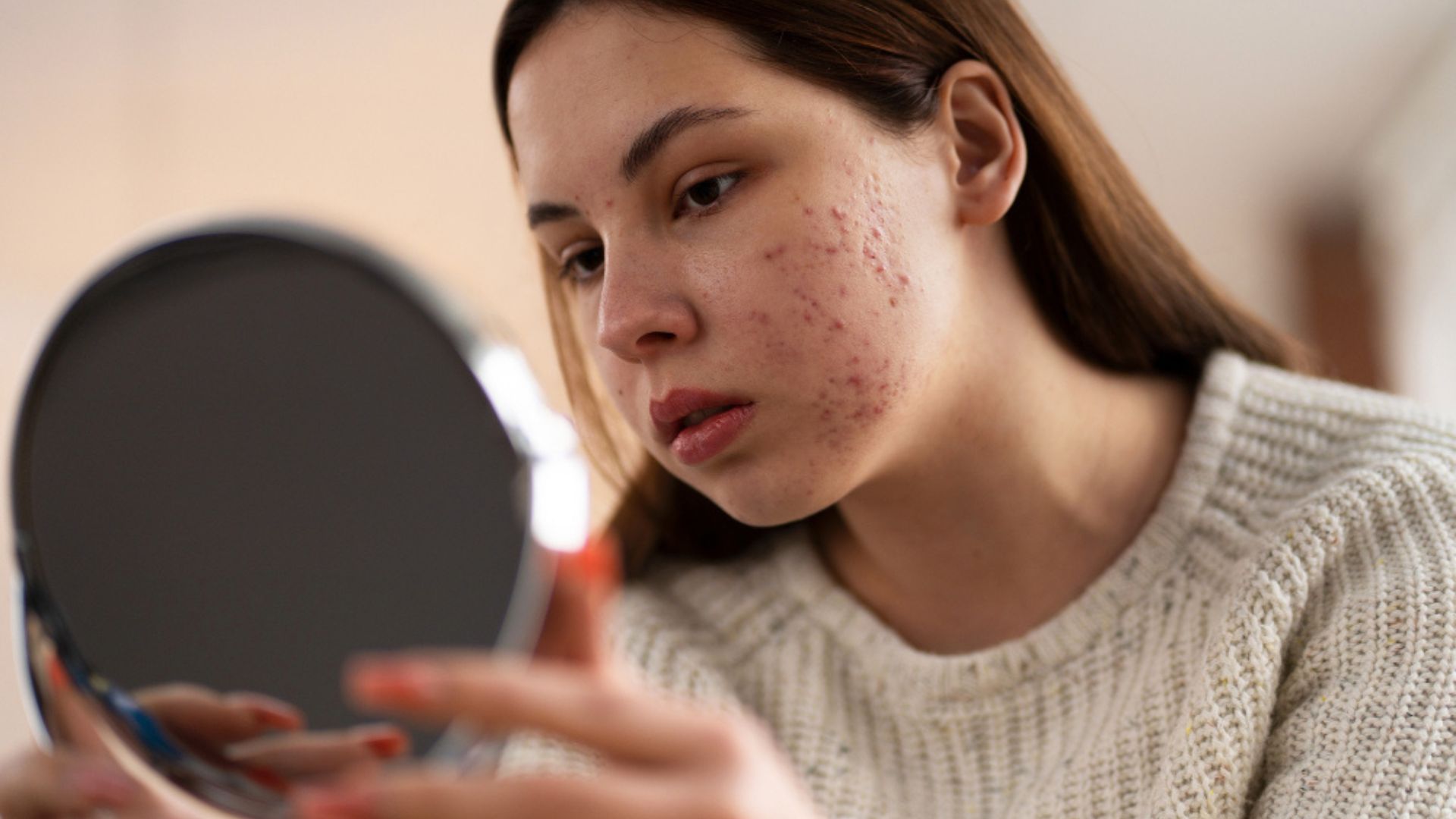

Fungal Acne: Causes, Symptoms & Treatment
Are you confused between fungal acne and regular acne? You are not the only one. People often get confused when thinking of fungal acne or regular acne. Both types lead to pimples because they are both caused by an infection in hair follicles. The main difference lies in what causes the infection.
In fungal acne, the infection is caused by a fungus called Malassezia yeast. In regular acne, your hair follicles are blocked with dead skin, oil and bacteria. Understand in-depth about fungal acne, its causes, symptoms and treatment in this guide.
What is Fungal Acne?
Fungal acne is a hair follicle infection caused by the overgrowth of Malassezia yeast, appearing as small, itchy, uniform red bumps and sometimes pustules, often on the chest, back, and face. Key characteristics of the fungal acne are as follows:
- It appears as small, uniform bumps (red or skin-colored) that appear in clusters or a rash-like pattern.
- Itchiness is a prominent symptom that can be intense.
- Unlike bacterial acne, fungal acne does not typically involve blackheads or whiteheads.
- Often found on the chest, back, and upper arms, though it can appear anywhere with hair follicles.
- Associated symptoms might include burning sensations, discomfort and scaling or flaking of the skin.
Furthermore will be in-depth information about fungal acne.
Fungal Acne: Causes, Symptoms & Treatment
| Causes | Symptoms | Treatment |
| Environmental causes include warm, humid environments and trapped moisture from sweating. | Fungal acne causes a sudden breakout of small pimples that may seem like a rash. | Topical antifungal treatment includes shampoos containing ingredients like ketoconazole or zinc pyrithione, which can be used as a body wash. |
| Clothing can also be a cause. Wearing tight, non-breathable, or sweaty clothes is not good. | The bumps form in clusters and look similar in size and appearance can be a symptom of fungal acne. | Oral antifungals can be used for more persistent cases. A GP Dermatologist Chermside, may prescribe oral medications, including fluconazole or itraconazole. |
| Using oil-rich skincare products that promote yeast growth is one of the causes. | Your skin may feel burning, itchy or painful. | Sulfur products like sulfur cleansers and creams also have antifungal properties. |
| Certain medications, like oral antibiotics, can disrupt the skin’s natural balance, leading to yeast overgrowth. | The blemishes can happen anywhere on the skin, but they are most common in the chin, chest, forehead, neck, upper arms, shoulders and upper back. | Oil-free skincare must be promoted, especially who have oily skin. Use lightweight, oil-free moisturisers and avoid oily products. |
| The sebum production can create an environment where yeast thrives, so individuals with oily skin need to be more specific about their skincare. | For individuals having light skin, the bumps may be surrounded by a red ring or border. | Shower immediately after sweating, change into dry, loose, and breathable clothing, and ensure towels are clean and dry. |
If you are still having doubts, then let the following information clear them all.
FAQs: Fungal Acne and More
Q1. What is fungal acne?
It is not true acne, it is caused by an overgrowth of yeast on the skin, leading to small, itchy, uniform bumps, often on the forehead, chest or back.
Q2.How do I know if it is fungal acne and not regular acne?
Unlike bacterial acne, fungal acne usually appears as clusters of small, similar-looking bumps. It feels itchy and does not respond to typical acne treatments.
Q3. What triggers fungal acne?
Hot, humid climate, oily skincare, sweating, overuse of antibiotics and tight clothing.
Q4. How is fungal acne treated?
Oral antifungals for stubborn cases can help, but are only prescribed by specialists. Topical antifungal creams and shampoos can help.
Q5. Can fungal acne come back?
Yes, since Malassezia yeast naturally lives on skin, flare-ups are common if sweat, humidity and heavy oils are not managed.
Q6. What skincare ingredients should be avoided if I have fungal acne?
Fatty acids, esters, polysorbates, and heavy oils need to be avoided.
Final Thoughts
Get consultations from specialists at CSMC. They offer a range of services and ensure you are getting the best specialised treatment. Dermatologists will ensure the treatment plan meets the needs of your skin, and it will be examined thoroughly before prescribing any medications.
Fungal acne can return if you are not managing the triggers, including sweating, heavy oils, humidity and tight clothing. One must take medications as per the expert advice and keep a good track of the bumps and their appearance on the skin. Report to your medical expert as soon as you notice the changes in shade, shape or size of the bumps.
References



